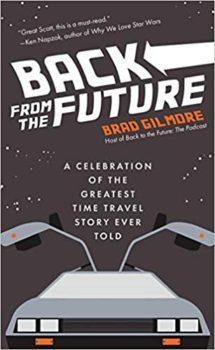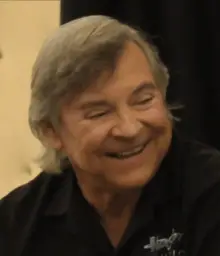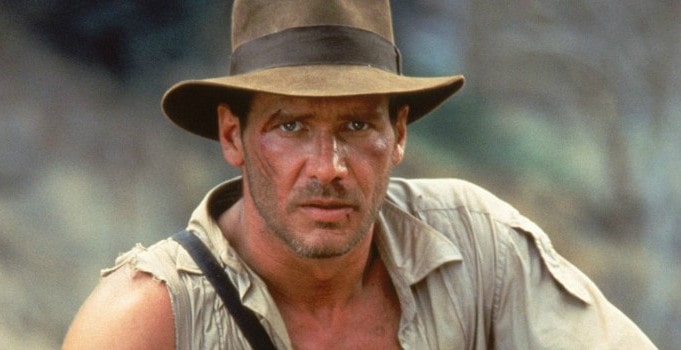
He’s one of the greatest action-adventure heroes in film history, but was there a real life Indiana Jones?
It’s amazing that Harrison Ford was able to play multiple iconic characters, and still have them be indistinguishable from each other. To play just one legendary screen role is enough. To not only be Han Solo, but also Indiana Jones is nothing short of amazing. Harrison Ford is able to still give them their own identity and you feel like you are watching two distinct characters – despite them having some similar traits.
So before we look at the real life inspiration behind Indiana Jones, let’s look at what got this iconic trilogy up and running in the first place (and the less we say about Indiana Jones and the Kingdom of the Crystal Skull the better…)
The Early Days Of Indiana Jones
Part of what made Star Wars the epic movie it was, was because it borrowed from the earlier tropes of Saturday morning serials. As unique as Star Wars was, it did borrow a lot from things like Buck Rogers and the Saturday matinee serials produced by Republic and Columbia.
Geoerge Lucas and Steven Spielberg grew up on these styles of films that were all about action, adventure, and always finished with a cliffhanger. This same approach was carried over to Star Wars, and along with using classic storytelling such as Joseph Campbells’s “hero’s journey” allowed them to be easily accessible to the masses.
This goes to show how much influence goes into creative endeavors. Pretty much all film, television, and music has some form of inspiration behind it. The creators of any art form always have their influences that brought them into the art form and you see this reflected in the art they then make.
Not only did George Lucas use those old Saturday matinee serials as an influence on Star Wars, he had another idea that would also mimic this style. Whereas Star Wars works as an epic space opera of sorts, he also wanted to create a straight up throwback, 1930s style action adventure with a standalone main character.
That of course would be Indiana Jones, and he had plans for this as far back as 1976 – while Star Wars was being made.
Indiana Jones And The Raiders Of The Lost Ark
The film that started it all. It’s crazy to think this movie came out way back in 1981. Raiders of the Lost Ark was the perfect action adventure movie that featured the iconic hero, Nazis, action, adventure, and a biblical mythology all wrapped together. Some of the special effects obviously don’t hold up today, but they were there to serve the story and for that reason, they still work well.
An interesting thing with ROTLA was that Harrison Ford was never the first choice to play Indiana Jones. They were going with Tom Selleck. But then some schedule issues came up that led Selleck to that other 80s classic – Magnum P.I.
Lucas said that he was never thinking about Harrison Ford as Indiana Jones because, as great as he’d be, he was too much identified with Han Solo. Spielberg had loved the work he had been seeing on early footage of Star Wars and thought he would be the guy to bring this character to life. A lot of the character of Indiana was already written on the page, but Harrsion Ford took it to a better level than they were expecting.
George Lucas states in various interviews that Raiders of the Lost Ark came together as smoothly as a movie could, and that it’s the most fun he’s ever had making a movie. It all started with the script written by Lawrence Kasdan who wrote The Empire Strikes Back which is considered the greatest of all Star Wars movies.
Not much was really altered from script to final product which led to the smoothness of the filming. Another aspect of this was because of Steven Spileberg himself. Spilberg was notorious for going over budget – and overtime – with his shooting schedules with movies like Jaws taking an extra 100 days over what was planned.
With Raiders of the Lost Ark, he made it a point to stay on track to prove to himself – and George Lucas – that he could do it. They finished about 12 days earlier than expected and this led to very little wasted shots and time. This gives the movie it’s great energy and pacing as there was no time wasted second guessing set ups and shots.
Raiders of the Lost Ark was beyond a massive hit. It made an astonishing $385 million which converted for today, is over one billion. And remember – films opened on way fewer screens back then. It was a critical and commercial hit and, when adjusted for inflation, remains one of the highest grossing movies ever.
Indiana Jones And The Temple Of Doom
Indiana Jones is obviously a hot property at this point, but things take kind of a messy turn going into the inevitable sequel. This is my least favorite of the trilogy and I just find it kind of rushed, the acting is not great, and even the editing seems too harsh and abrupt.
The middle third of the movie doesn’t hold up, but has a good ending to it. But I have to say that the mine cart/roller coaster scene is still astonishing to this day. This came out in 1984 and the technical innovations seemed quite well advanced from where they were in 1981. A lot of the issues with this movie tend to come down to what was going on in real life with George Lucas and Steven Spielberg. Both were going through some harsh life changes and this, to me, is reflected in the product on the screen.
Another big issue has to do with the violence.
Raiders of the Lost Ark was no Sunday picnic, and a lot of people complained about the amount of violence and gore in a PG rated movie. That was nothing compared to the Temple of Doom. Indiana Jones had a massive kids audience and parents were horrified at what they saw on the screen.
A lot of this violence and darkness was, again, a reflection of the darkness going on in the lives of Lucas and Spielberg. And this would actually change movies forever. Due to the traumatizing images of a PG movie, the Temple of Doom would be reasonable for ushering in a new era of film rating: PG-13.
This new rating would end up being the most profitable in history as directors could now push the boundaries and families would know what the intended audience now was. Fun fact: the first movie to use the PG-13 rating after the Temple of Doom? Red Dawn with Patrick Swayze.
( I have a very interesting article on this whole creation of the PG-13 rating you can check out here)
So things had gone a little off track with the Indiana Jones franchise, but the third installment would erase all that uncertainty and take the franchise to a whole new level.
Indiana Jones And The Last Crusade
Not only is this the best film of the franchise, it’s one of the best of all time, and dare I say, the perfect movie. It again has all those elements that make for timeless entertainment: Mystery, suspense, action, adventure, comedy, Nazis, and more biblical mythology.
What makes a movie like Indiana Jones and the Last Crusade so great is that it’s all these different movies in one, and that usually makes for timeless classics. The Last Crusade is pure Indiana Jones with the action, adventure, and quest for the Holy Grail. It brings in Sean Connery who seamlessly enters into the franchise and expands the world of Indiana Jones.
If you haven’t watched this movie in awhile, check it out again. It really does feel timeless, yet still feels really fresh considering it’s more than 30 years old. It feels like it was made yesterday, and could have been released in any era of film. It has such a breathless pace and energy to it, and never stops moving over the course of 128 minutes.
Everything about this movie is great and audiences and critics ate it up. It grossed around $474 million which converted for today, brings it in at close to one billion dollars (insert Dr. Evil voice). So, for the time being, Indiana Jones had ended on the perfect note. And this led to a few new public interests…
Indiana Jones And The Spike In Archeology
National Geographic put out an interesting article about the fact that the success and popularity of the Indiana Jones movies lead to a spike in archeology courses, and careers in the field. Whether it was the swashbuckling hero aspect, or just the interest of ancient things, there was a much greater interest in archeology right from the start.
National Geographic have put on exhibitions that were inspired by the movie. In 2015, they put on Indiana Jones and the Adventure of Archeology. This exhibition showcases memorabilia from the movies along with ancient objects, and historical artifacts.
The curators of these events noted how the movies “have broadened the scope of archeology and made it more relevant – and exciting – to people everywhere.” Since 1981, more and more people have enrolled in archaeology programs around the world. Whether it was hoping that they could become a real life Indiana Jones, or just open their mind to more of the world, the movies help to do this.
So Who Was The Real Life Indiana Jones?
There’s not one person that was a direct inspiration for the character of Indiana Jones, but several that may have been. It was a combination of these various individuals – plus the interpretation of the character by Harrison Ford – that shaped the Indiana Jones we saw on the big screen.
But these real life Indiana Jones did possess the traits that inspired the character and drove the tone of the films. These people were often off on extoic exploits to find historiacal artifacts from around the world. They genuinely were looking for things like lost cities, they were discovering real life treasures, and deciphering hieroglyphics.
But who were the real-life archeologists that George Lucas took inspiration from? Let’s look at the three main ones that were the real life inspiration for Indiana Jones.
1. Hiram Bingham
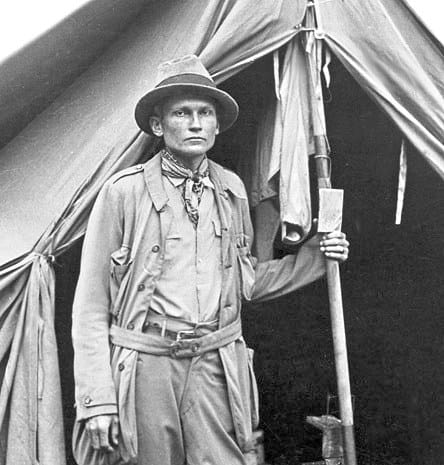
Bingham was born in 1875 and was a politician but also an explorer. He was not a trained archeologist but still investigated anything to do with artifacts, history, and lost cities. Bingham was the man who first discovered Machu Picchu which is now one of the most famous sites on earth.
He had a passion for “lost cities” and constantly trekked around South America looking for lost Inca cities. Bingham worked alongside the National Geographic Society that helped to fund his quests of discovery.
He would end up discovering the lost city of Vilcabamba, which he thought he had found when he first discovered Machu Picchu. He would later end up finding Vilicambamab too.
On this big trek to Peru in the early 1900s, Bingham collected an astonishing 40,000 artifacts made up of mummies, exotic animals, ceramics, antiquities, and even human skeletal remains. He wrote the very popular book, “The Lost City Of The Incas” and it’s this lost city side to him that would have some influence in the creation of the Indiana Jones character.
A few of the specific influences would be the same fedora hat worn by both Bingham and Indianajones, and some of the situations would influence Raiders of the Lost Ark. The ruggedness of Bingham, and the adventure side, can clearly be seen in Indiana Jones.
Roy Chapman Andrews
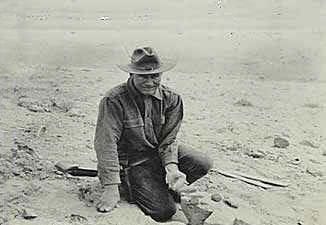
Andrews had all the makings of a swashbuckling archaeologist and looks like a real life Indiana Jones. Andrews hails from Wisconsin and was born in 1884. In 1906 he hopped on a train that was heading for New York City. When he got there, he went straight to the American Museum of Natural History.
Side note: If you ever get the chance to visit the Museum of Natural History while in New York, make sure you do. It’s astonishing – but make sure you give yourself a lot of time there as there is so much to see.
It was his dream to work there, but there was no room at the inn. He ended up taking a job cleaning floors as a way to get his foot in the door. It worked, and he slowly became responsible for more operations in the museum. This ended up with him finally getting out in the field to do some real work.
He found himself out in Asia and would constantly find himself cheating death. He was put into so many precarious situations doing his archeology work that it’s a miracle that he survived. Some of his tales include:
- Having their boat rammed by a charging whale
- Almost drowning in a typhoon – twice
- Nearly being eaten by wild dogs
- Almost being killed by bandits
- Falling off cliffs
- And in one of the most Indiana Jones situations possible; nearly being caught by a huge python
Andrews’ big moments would come in the Gobi desert, and desserts having always been synonymous with Indiana Jones. In the 1920, Andrews would end up finding many dinosaur fossils which were taking the world by storm. He found some of the first dinosaur eggs in existence and this heightened him to the levels of archaeology superstar.
If you go on roychapmanandrewssociety.org, you can see even more about his adventures, and this really was his hallmark as he said, “always there has been an adventure just around the corner.”
Part of what makes him a real life Indiana Jones is how he explored all corners of the world. Just as Indiana’s pursuits took him from country to country, Chapman exclaimed how he wanted to go everywhere: “I would have started on a day’s notice for the North Pole or South Pole. It made not the slightest difference to me.”
It would be this fearlessness and sense of adventure that made him the perfect inspiration for what would become Indiana Jones. One of the amazing things about these real life Indiana Jones – and the fictional character – is how they were doing all this exploring with pretty primitive means. Air travel was not very common and even the car wasn’t a readily available thing. They were going to some of the most remote places on earth that were not very accessible.
The places they went to – even today – would be beyond difficult to sojourn to, but they were making it happen.
Sir Leonard Woolley
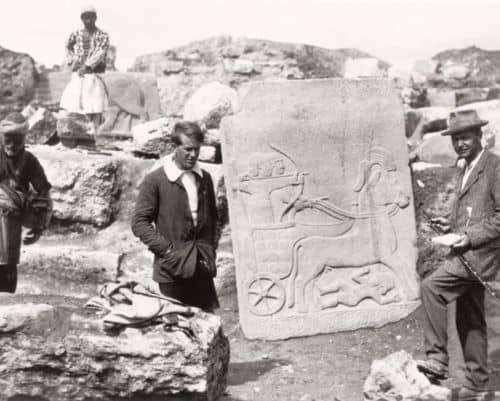
Wooley was a British archaeologist born in London in 1880. He may have been responsible for the biblical mythology aspect of Indiana Jones. Woolley explored the Sudan region with real life Lawrence of Arabia, T.E. Lawrence. Woolley was big into finding lost and ancient cities and would help to discover the Hittite city in Syria, along with the ancient Sumerian city of Ur.
He was also a big part of excavation and discovery of ancient Egypt. One big discovery of his was royal Egyption tombs dating back almost 3000 years. He discovered more about ancient cities in Mesopotamia along with locations in Turkey.
He also investigated evidence of a global flood harkening back to the days of Noah. His interest in these biblical accounts may have been the inspiration for Indiana Jones premises including the Ark of the Covenant, and the Holy Grail.
Information from the Penn Museum makes note of Woolleys desire for the preservation of treasures – just like our boy Indy…”this belongs in a museum!” What makes Woolley a lot like a real life INdiana Jones is that he was considered one of the best archaeologists ever and just seemed to have a sense for finding the right sites and locations.
He studied at Oxford but then traveled to Germany and France in order to learn the languages which would help him in his archaeological pursuits. He served during the First World War and even ended up in a Turkish prison. His work in India seemed to influence the Temple of Doom, and he would even end up as an elite lecturer, and author.
A big inspiration for the character of Indiana Jones from Woolley seems to be his unique charm. This was a noted trait of his and he was easily able to win over many people. HIs presence was also significant due to his sense of humor and his overall ingenuity – the perfect traits to make up a swashbuckling big screen hero.
So Which One Is The Real Life Indiana Jones?
We can obviously see that the real life Indiana Jones is a combination of these three, with some other influences as well. That’s mainly the basis for the character on paper, but it’s important to note what Harrison Ford did to elevate the character with his performance and interpretation of it.
I would have to say that I see a lot of Indiana Jones -character-wise – in Sir Leonard Woolley. For the adventurer side, there seems to be a bit more Roy Chapman Andrews.
But here’s something interesting: National Geographic has mentioned that the costume designer on Raiders of the Lost Ark has gone on record saying that they drew inspiration for Indiana’s costume from the movie Secret of the Incas.
That movie starred Charleston Heston and came out in 1953. Heston plays a treasure hunter looking for Inca treasure in Peru, and the movie was made based on articles about Hiram Bingham’s adventures. Indiana Jones’ costume looks just like the one out of this movie, and the technical advisor on it was a friend of Bingham’s named Albert Giesecke who helped Bingham on his explorations…
But when you combine all these people and attributes, with Harrison Ford, George Lucas, and the direction of Steven Spielberg, you’ve got one of the greatest movie characters of all time.

